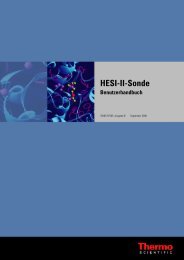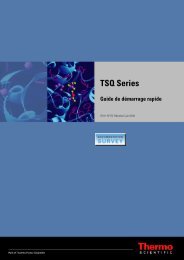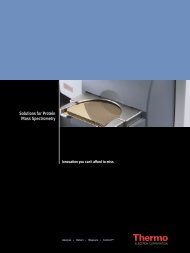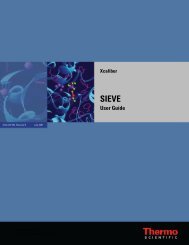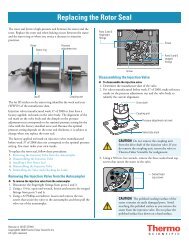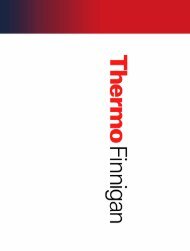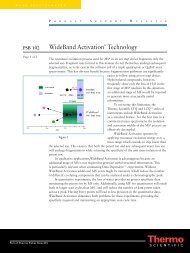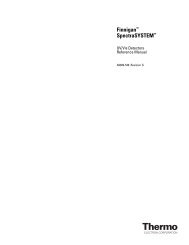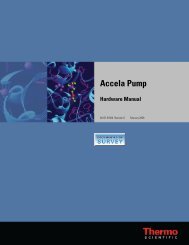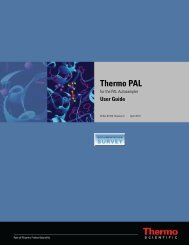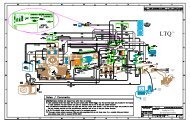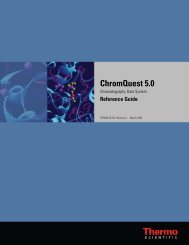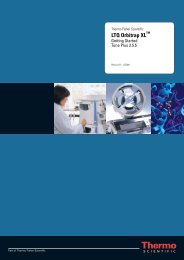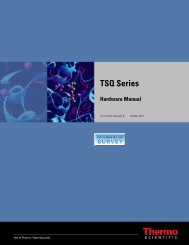LTQ Orbitrap XL Hardware Manual
LTQ Orbitrap XL Hardware Manual
LTQ Orbitrap XL Hardware Manual
You also want an ePaper? Increase the reach of your titles
YUMPU automatically turns print PDFs into web optimized ePapers that Google loves.
Functional Description<br />
Gas Supply<br />
In case argon is used as HCD collision gas, it should be of high purity<br />
(99.99%).<br />
The laboratory gas supply is connected to the inlets at the right side of<br />
the instrument. See Figure 1-9 on page 1-11. Within the instrument,<br />
the helium gas is led from the helium port through a stainless steel<br />
capillary to the right rear side of the linear trap. Nitrogen gas and<br />
HCD collision gas are both led via Teflon tubing to the right side of the<br />
<strong>LTQ</strong> <strong>Orbitrap</strong> <strong>XL</strong>.<br />
Part of the nitrogen gas flow is directed through Teflon tubing via a<br />
pressure regulator to the vent valve of the linear trap. (See below for<br />
further information.) Another part of the nitrogen flow is directed<br />
through Teflon tubing to the vacuum chamber of the <strong>Orbitrap</strong>.<br />
Nitrogen gas pressure to the C-Trap is kept constant by using an<br />
“open-split” interface (gas flow divider, see Figure 1-21 on page 1-27). It<br />
contains a capillary line from the nitrogen line of the instrument to<br />
atmosphere (flow rate: ~20 mL/min), with another capillary leading<br />
from the point of atmospheric pressure into the C-Trap (flow rate:<br />
~0.2 mL/min). For the nitrogen gas to the C-Trap, black PEEKSil<br />
tubing is used (75 μm ID silica capillary in 1/16 in PEEK tubing).<br />
CLT RF Main board housing<br />
Temperature controller board<br />
Figure 1-20. Valve for HCD collision gas<br />
1-26 <strong>LTQ</strong> <strong>Orbitrap</strong> <strong>XL</strong> <strong>Hardware</strong> <strong>Manual</strong> Thermo Fisher Scientific



